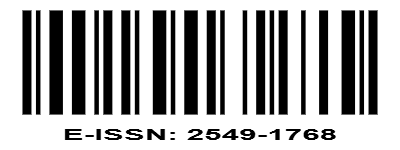PLANT INVENTORY OF CAMPUS AREA AT UNIVERSITAS SYIAH KUALA, BANDA ACEH
DOI:
https://doi.org/10.22373/biotik.v10i2.15110Keywords:
flora list, Universitas Syiah Kuala, open green space.Abstract
Syiah Kuala University is one of the public universities in Banda Aceh, where each office unit has an Open Green Space (OGS). The green space is planted by plants, both intentionally and wildly. There are several plant habitus, including herbs, shrubs, and trees. There is no information on the list of flora species on the campus of Syiah Kuala University. Therefore, it is necessary to carry out an inventory of plant species in the campus area has been carried out. The study was conducted using a survey method at 21 observation sites. The survey results show that there are 130 species from 41 families. Species with the highest number of species were Poaceae, Asteraceae, and Arecaceae. The most common habitats found were trees (50.77%), herbs (28.46%), shrubs (16.92%), and bush (3.86%). The species are trees intentionally planted for the open green space to function as a shade or shelter.
Downloads
References
V. R. Puspa, Djufri, Hasanuddin, and S. Hartini, “The diversity of trees and open green spaces (OGS) at Universitas Syiah Kuala,” in Journal of Physics: Conference Series, Mar. 2020, vol. 1460, no. 1. doi: 10.1088/1742-6596/1460/1/012078.
N. Astriani, “Implikasi Kebijakan Ruang Terbuka Hijau dalam Penataan di Jawa Barat,” Fiat Justisia Jurnal Ilmu Hukum. 2014. 8(2):243-254.
F. Halle, R. A. A. Oldeman, and P. B. Tomlinson, “Tropical trees and forests : An architectural analysis,” 1978.
S. B. , Jr. L. A. E. Jones, Plant Systematic, 2nd ed. New York.: McGraw Hill Book Co, 1987.
H. B. , R. E. H. and N. L. B. Gilliland, Grasses of Malaya. Singapura: Government Printer., 1971.
B. F. A. R. S. Widyastri Atsary Rahmy, “Kebutuhan Ruang Terbuka Hijau Kota pada Kawasan Padat, Studi Kasus di Wilayah Tegallega, Bandung,” 2012.
Zoer’aini Djamal Irwan, Prinsip-prinsip ekologi dan organisasi ekosistem, komunikasi dan lingkungan. Jakarta: Bumi Aksara, 1992.
V. R. Puspa, Djufri, Hasanuddin, and S. Hartini, “The diversity of trees and open green spaces (OGS) at Universitas Syiah Kuala,” in Journal of Physics: Conference Series, Mar. 2020, vol. 1460, no. 1. doi: 10.1088/1742-6596/1460/1/012078.
C. A. dan R. C. B. van den B. J. Backer, Flora of Java, vol. III. Groningen: Wolters Noordhof, 1968.
Solikin, “Jenis-jenis Tumbuhan Suku Poaceae di Kebun Raya Purwodadi Plant species of Family Poaceae in the Purwodadi Botanic Garden,” 2005.
G. P. Manikasari, L. Muta’ali, and L. R. Faida, “Green open spaces in the perspective of ecosystem services (a case study of green open spaces in the urban area of Yogyakarta),” Digital Press Life Sciences, vol. 1, p. 00005, 2018, doi: 10.29037/digitalpress.21243.
F. Halle, R. A. A. Oldeman, and P. B. Tomlinson, “Tropical trees and forests : An architectural analysis,” 1978.
Djufri, Wardiah, and Z. A. Muchlisin, “Plants diversity of the deforested peat-swamp forest of Tripa, Indonesia,” Biodiversitas, vol. 17, no. 1, pp. 372–376, Apr. 2016, doi: 10.13057/BIODIV/D170150.
N. Astriani, “Implikasi Kebijakan Ruang Terbuka Hijau dalam Penataan Ruang Terbuka Hijau di Jawa Barat,” Fiat Justisia Jurnal Ilmu Hukum Volume, vol. 8, no. 2, pp. 243–254, 2014.
D. Septriana, A. Indrawan, E. Nurfilmarasa Dahlan, and I. Nengah Surati Jaya, “PREDIKSI KEBUTUHAN HUTAN KOTA BERBASIS OKSIGEN DI KOTA PADANG, SUMATERA BARAT,” 2004.
D. DJUFRI, “Vegetation analysis of spermatophyte in Taman Hutan Raya (Tahura) Seulawah, Aceh Besar,” Biodiversitas, vol. 4, no. 1, Jan. 1970, doi: 10.13057/biodiv/d040106.
R. R. S. N. R. I. Zulham Aaron Mochamad, “Kajian Fungsi Ruang Hijau Fakultas Pertanian Universitas Gadjah Mada,” vol. 4, no. 1, pp. 15–28, 2015.
Indriyanto, Ekologi Hutan. Jakarta: Bumi Aksara, 2006.
R. FADRIKAL, “Komunitas burung urban: Pengaruh luas wilayah dan jenis pohon ruang terbuka hijau terhadap,” Dec. 2015. doi: 10.13057/psnmbi/m010815.
D. S. A. A. Saiful Bahri, “KEBUTUHAN RUANG TERBUKA HIJAU KOTA BANDA ACEH,” 2012.
Downloads
Published
Issue
Section
License
Copyright (c) 2022 Vivera Ruselli Puspa, Djufri Djufri, Suji Hartini, Muhammad Rusdi

This work is licensed under a Creative Commons Attribution-ShareAlike 4.0 International License.
Authors who publish with BIOTIK: Jurnal Ilmiah Biologi Teknologi dan Kependidikan agree to the following terms:
- Authors retain copyright and grant the journal right of first publication with the work simultaneously licensed under a Creative Commons Attribution License that allows others to share the work with an acknowledgement of the work's authorship and initial publication in this journal.
- Authors are able to enter into separate, additional contractual arrangements for the non-exclusive distribution of the journal's published version of the work (e.g., post it to an institutional repository or publish it in a book), with an acknowledgement of its initial publication in this journal.
- Authors are permitted and encouraged to post their work online (e.g., in institutional repositories or on their website) prior to and during the submission process, as it can lead to productive exchanges, as well as earlier and greater citation of published work.











